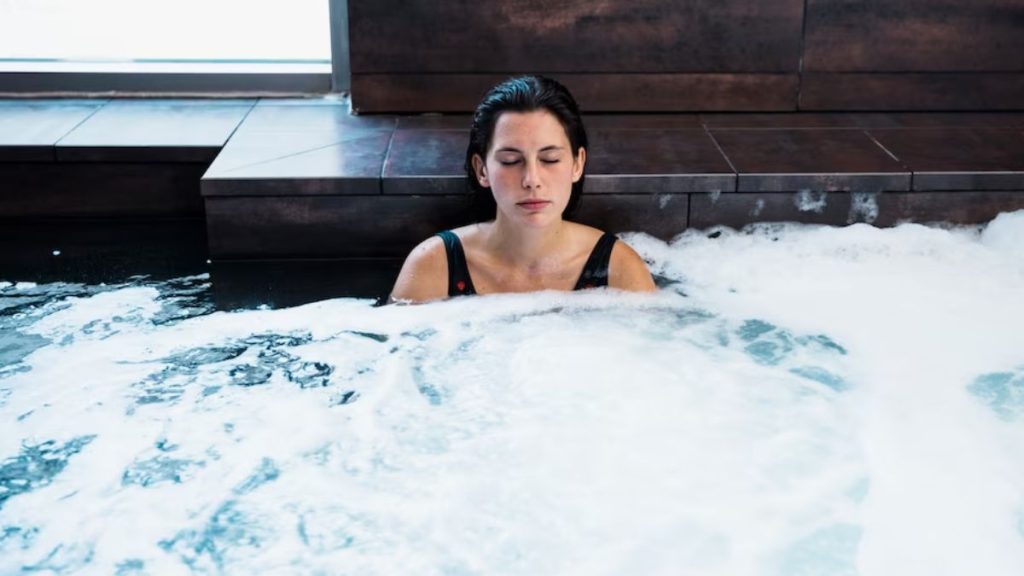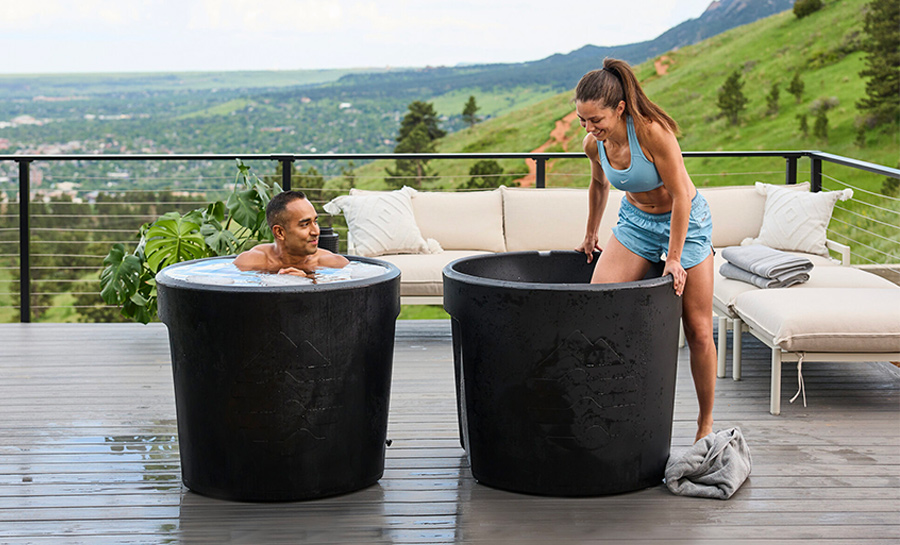
The Benefits of Cold Plunging: Why You Should Try It
Cold plunging has become increasingly popular among fitness fanatics, famous people, and athletes in the
Cold plunging has become increasingly popular among fitness fanatics, famous people, and athletes in the last many years. This method is submerging one’s body in icy water for brief intervals, usually between a few seconds and a few minutes. But what is it about cold plunging that makes it so tempting? Here we’ll go over some of the many reasons why cold plunging should be a part of your regimen and the many advantages it offers.
What is Cold Plunging?

Plunging oneself headfirst into icy water, usually at or below 60 degrees Fahrenheit (15 degrees Celsius), is called cold plunging. Several contexts are suitable for this, such as:
- Cold Showers: Taking a cold shower is a quick and easy way to begin cold plunging in the comfort of your own home.
- Ice Baths: Making an ice bath is as simple as filling a bathtub halfway with water and ice.
- Natural Bodies of Water: Lakes, rivers, and the ocean are examples of natural bodies of water, especially when the weather is chilly.
- Cold Plunge Pools: Pools engineered to keep water at a continuously cold temperature are known as cold plunge pools.
The Science Behind Cold Plunging
Scientific evidence supports the use of cold plunging. The body goes through a number of changes while submerged in cold water:
- Vasoconstriction: Blood vessels constrict to preserve core body temperature, which can help reduce inflammation and swelling.
- Endorphin Release: The shock of cold water stimulates the release of endorphins, the body’s natural painkillers, leading to a feeling of euphoria and well-being.
- Metabolic Boost: Cold exposure activates brown fat, which burns calories to generate heat, potentially aiding in weight management.
- Improved Circulation: The initial constriction and subsequent dilation of blood vessels enhance circulation, delivering more oxygen and nutrients to tissues.
Benefits of Cold Plunging

1. Enhanced Recovery and Reduced Inflammation
Athletes have long used cold plunging as a recovery tool. The cold water helps to reduce muscle soreness and inflammation after intense workouts. Studies have shown that cold water immersion can significantly decrease delayed onset muscle soreness (DOMS), making it a valuable recovery method for those engaged in regular physical activity.
2. Boosted Immune System
Regular cold exposure has been linked to an improved immune response. Cold plunging can increase the production of white blood cells, which play a crucial role in defending the body against infections. Some research suggests that people who regularly practice cold plunging have a higher resilience to illnesses such as the common cold.
3. Improved Mental Health and Resilience
The mental health benefits of cold plunging are profound. The initial shock of cold water forces the body into a state of heightened alertness, which can help combat feelings of depression and anxiety. Additionally, the practice of enduring the discomfort of cold water builds mental toughness and resilience, which can translate into other areas of life.
4. Enhanced Circulation and Cardiovascular Health
Cold plunging stimulates blood flow, which can improve cardiovascular health. The alternating constriction and dilation of blood vessels during cold exposure enhance circulation, which helps deliver oxygen and nutrients more efficiently throughout the body. Improved circulation also supports heart health by reducing the strain on the cardiovascular system.
5. Better Skin and Hair Health
Cold water immersion can also benefit your skin and hair. Cold water tightens the pores and cuticles, which can make your skin appear smoother and your hair shinier. It also reduces the appearance of redness and puffiness, giving your complexion a healthy, refreshed look.
6. Increased Metabolism and Weight Loss
Cold plunging can boost your metabolism by activating brown fat, a type of fat that burns calories to generate heat. This process, known as thermogenesis, can help with weight management and potentially aid in weight loss efforts. While cold plunging alone won’t lead to significant weight loss, it can complement a healthy diet and exercise regimen.
How to Get Started with Cold Plunging

Starting with cold plunging can be daunting, but with a gradual approach, you can ease into the practice and reap its benefits.
Step-by-Step Guide to Cold Plunging:
- Start with Cold Showers: To start, add 30 seconds of cold water to the end of each of your normal showers. As you get the hang of it, shorten the time intervals.
- Progress to Ice Baths: You can go on to ice baths when you’ve become used to chilly showers. To begin, fill a bathtub halfway with ice and cold water, then submerge yourself for one to three minutes.
- Try Natural Bodies of Water: To enjoy the advantages of cold plunging in a natural environment, it is best to locate a lake or river, or other large, unpolluted body of water.
- Join a Community: A lot of places have communities or groups that do cold plunging. You can find community, inspiration, and shared experiences by becoming a member of one.
Tips for a Successful Cold Plunging Experience:
- Breathe Deeply: Focus on deep, steady breaths to help your body adapt to the cold.
- Stay Calm: Try to remain calm and relaxed, even as your body initially reacts to the cold.
- Limit Exposure: Start with short durations and gradually increase your time in the cold water to avoid shock or hypothermia.
- Listen to Your Body: Pay attention to how your body feels and stop if you experience pain or extreme discomfort.
FAQ
1. Is cold plunging safe for everyone?
Cold plunging can be safe for most people, but those with certain medical conditions, such as heart problems or Raynaud’s disease, should consult a healthcare provider before starting. Always listen to your body and start gradually.
2. How long should I stay in the cold water?
Beginners should start with 1-3 minutes and gradually increase the duration as they become more accustomed to the cold. Experienced cold plungers may stay in the water for 5-10 minutes, but longer durations should be approached with caution.
3. How often should I practice cold plunging?
The frequency of cold plunging can vary based on individual preferences and goals. Some people may benefit from daily sessions, while others might find a few times per week sufficient. Consistency is key to experiencing the benefits.
4. Can cold plunging help with muscle recovery?
Yes, cold plunging is known to help reduce muscle soreness and inflammation, making it an effective recovery tool for athletes and those engaged in regular physical activity.
5. What time of day is best for cold plunging?
There is no specific best time for cold plunging; it depends on personal preference. Some people prefer morning plunges to start their day with increased alertness, while others may prefer evening sessions to aid in muscle recovery and relaxation.
Conclusion
Cold plunging is a powerful practice with numerous physical and mental health benefits. From enhanced recovery and reduced inflammation to improved mental health and cardiovascular health, the advantages of cold water immersion are extensive. By starting gradually and listening to your body, you can safely incorporate cold plunging into your wellness routine and experience its transformative effects. Embrace the cold, boost your resilience, and discover the profound benefits of cold plunging for yourself.
